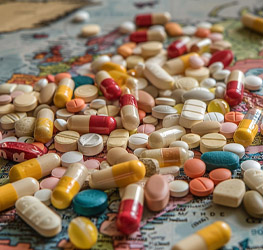Top Trends In API Intermediates And Bulk Drugs For 2025
India’s Push For Domestic API Production
India has historically relied on imports, especially from China, for over 60% of its bulk drug and API needs. In 2025, that’s changing. Thanks to government initiatives like the Production Linked Incentive (PLI) scheme and the development of bulk drug parks, India is strengthening its position as a global pharma manufacturing hub.
Why It Matters
- Encourages local API production
- Reduces dependency on imports
- Opens up new sourcing opportunities within India

Continuous Manufacturing Takes The Lead
Pharmaceutical companies are moving away from traditional batch manufacturing to continuous manufacturing systems. This innovation brings higher efficiency, faster production, improved product consistency, and lower costs.
Benefits
- Quicker response to demand spikes
- Better quality control
- Less waste and downtime
Rise Of Biopharmaceutical And Complex APIs
Opportunities
- Growing demand for polypeptides and amino acids
- Need for specialized intermediates for biologics
- Rising export potential for Indian biosimilar APIs
Technology-Driven R&D And Supply Chain Optimization
Artificial intelligence (AI), data analytics, and automation are transforming R&D and pharma logistics. Smart factories and AI-enabled tools are helping in shortening drug development timelines and predicting supply chain disruptions.
Key Advancements
AI for drug molecule screening
Digital inventory and forecasting tools
Blockchain for transparent documentation
Sustainability And Green Chemistry
Export Growth Backed By Compliance And Quality
Key Compliance Drivers
Regulatory-friendly documentation
Transparent traceability
Certified manufacturing sites

